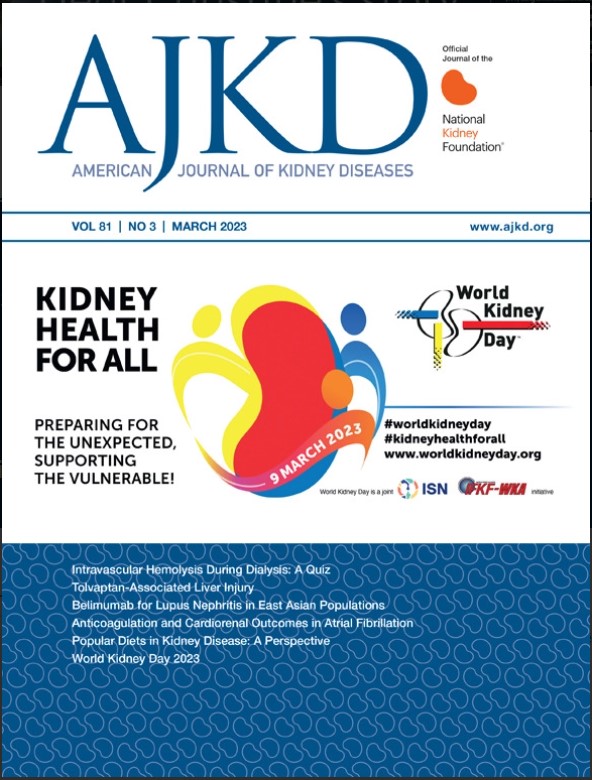非诺贝特诱导的渗透性肾病:急性肾损伤的新机制。
IF 8.2
1区 医学
Q1 UROLOGY & NEPHROLOGY
引用次数: 0
摘要
贝特类药物是一种常用的治疗血脂异常和心血管疾病的药物。这些药物与血清肌酐可逆性升高和某些情况下的急性肾损伤有充分的证据。贝特类药物对肾脏影响的机制目前尚不清楚。我们描述了一个病例的急性肾损伤的病人谁被给予非诺贝特在设置严重肾功能损害的未调整剂量。肾活检显示小管上皮细胞内广泛的等距空泡化与渗透型损伤一致。基于给药与急性肾损伤的时间关系,本病例中非诺贝特可能是致病因子。急性肾损伤的恢复时间也与已知的药物代谢物的半衰期一致。没有其他药物、高血糖的极端情况或静脉注射药物来解释活检结果。本病例显示非诺贝特相关急性肾损伤伴渗透性肾病的潜在新机制。我们回顾了目前对非诺贝特对肾脏的影响和渗透性肾病的可能发病机制的了解。本文章由计算机程序翻译,如有差异,请以英文原文为准。
Fenofibrate-Induced Osmotic Nephropathy: A Novel Mechanism of Acute Kidney Injury
Fibrates are a commonly used medication in the management of dyslipidemia and cardiovascular risk. These agents have a well-documented association with reversible elevations in serum creatinine and in some instances acute kidney injury. The mechanism underlying the renal effects of fibrates are currently not well understood. We describe a case of acute kidney injury in a patient who was administered an unadjusted dose of fenofibrate in the setting of severe renal impairment. Kidney biopsy demonstrated extensive isometric vacuolization within tubular epithelial cells consistent with osmotic-type injury. Fenofibrate in this case was the likely causative agent based on the temporal relationship of drug administration and acute kidney injury. The acute kidney injury also recovered over a timeframe consistent with the known half-life of the drug metabolite. There were no other drugs, extreme instances of hyperglycemia, or intravenous (IV) agents administered to account for the biopsy findings. This case demonstrates a potential novel mechanism of fenofibrate-associated acute kidney injury with osmotic nephropathy. We review the current understanding of the effects of fenofibrate on the kidney and possible pathogenesis of osmotic nephropathy.
求助全文
通过发布文献求助,成功后即可免费获取论文全文。
去求助
来源期刊

American Journal of Kidney Diseases
医学-泌尿学与肾脏学
CiteScore
20.40
自引率
2.30%
发文量
732
审稿时长
3-8 weeks
期刊介绍:
The American Journal of Kidney Diseases (AJKD), the National Kidney Foundation's official journal, is globally recognized for its leadership in clinical nephrology content. Monthly, AJKD publishes original investigations on kidney diseases, hypertension, dialysis therapies, and kidney transplantation. Rigorous peer-review, statistical scrutiny, and a structured format characterize the publication process. Each issue includes case reports unveiling new diseases and potential therapeutic strategies.
 求助内容:
求助内容: 应助结果提醒方式:
应助结果提醒方式:


